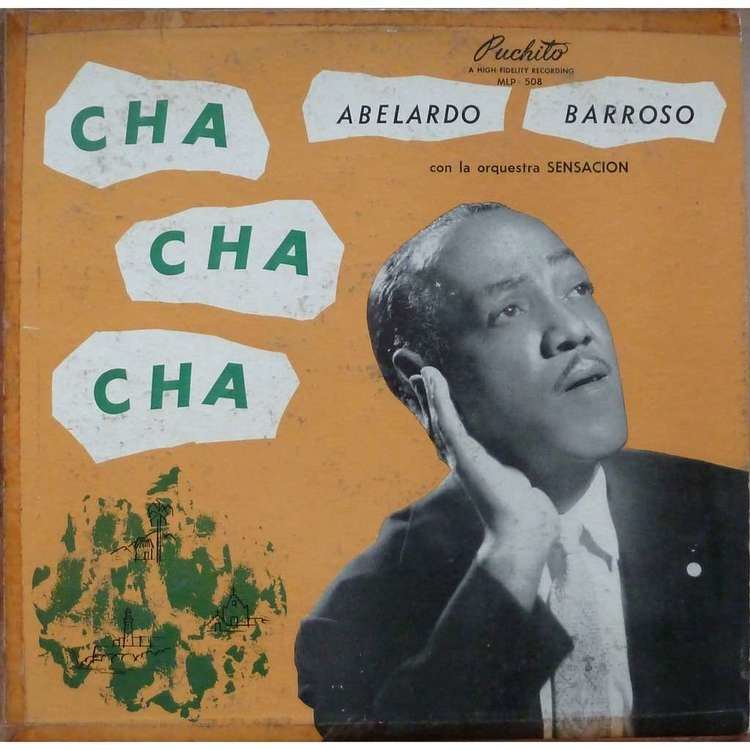9.7.5 Abelardo Barroso Dargeles

Abelardo Barroso Dargeles, a prominent Cuban singer popularly known as the “el mayor sonero” (the greatest sonero), was born on September 21, 1905, in the Cayo Hueso neighborhood of Havana. Due to the economic situation, he had to earn a living from a young age, working several jobs, such as being a chauffeur for hire. He was also a boxer and baseball player. In his spare time, he sang with troubadours who performed for tips in Havana cafes, or with son groups that worked in small cabarets on Marianao Beach.
In 1925, when Abelardo Barroso was 25 years old, he joined the Sexteto Habanero collective, performing both song and son music at the exclusive Vedado Lawn Tennis Club. In October of that same year, the group began making its first recordings in Havana for RCA Victor, and in November they completed their second session. Abelardo sang and played claves on the sextet’s first recordings.
The following year, she began singing in the Sexteto Boloña, directed by Alfredo Boloña, with whom she traveled to New York in October 1926, in order to make a series of recordings for the Brunswick label.
In 1927, he recorded again with the Sexteto Habanero in Havana for the Víctor label. Later that same year, he participated in the first recordings made in New York by Ignacio Piñeiro’s Septeto Nacional for Columbia. One of those recordings features Fernanda, a work of his own.
In 1928, Barroso was asked to participate in the recording of the Sexteto Nacional and the Habanero. In October, he recorded sixteen sones with the Sexteto Boloña, where he sang lead vocals. Among them were Échale candela, by Boloña, and Flora, by Barroso.
The following year, in 1929, he joined the Salmerón variety troupe, which performed for a year in the Spanish cities of Bilbao, Barcelona, and Madrid. Upon his return to Cuba, he joined Ernesto Muñoz’s orchestra as a singer, where he popularized a new musical form, the Danzonete.
Together with Orestes López, he founded the López-Barroso charanga in 1933, and alternated performances with his septet Universo until 1935, when he founded the Pinín sone sextet. A year later, he began singing with Andrés Laferté’s orchestra and later with pianist Everardo Ordaz’s group.
In the late 1930s, in 1939, he began working at the COCO radio station, alongside the Maravilla del Siglo orchestra, where he replaced singer Fernando Collazo.
In the 1940s, Abelardo Barroso performed in several shows at the Sans-Souci cabaret, singing backing vocals. In 1948, he began singing and playing claves and maracas in the National Police Band.
During these years, Barroso went through a period of economic depression, forcing him to work as a house painter and stevedore on the docks.
In 1954, he was part of Rafael Ortega’s orchestra, where he played the tumbadora, with which he performed at the Sans-Souci cabaret, when he was recognized by Jesús Gorís, owner of the Puchito record company, who invited him to record with Rolando Valdés’ Sensación orchestra, which he had just hired.
Abelardo recorded two of his old hits for Puchito: “Milonga española (La hija de Juan Simón)” and “En Guantánamo” by Juana González de Cabrera. Abelardo Barroso’s first recordings with La Sensación were extraordinarily successful and were sold in other Caribbean countries. In 1957, the group received a Gold Record for sales. That same year, they were booked for a concert in Miami.
In the late 1950s, Barroso appeared on radio and television programs and was also requested to perform at carnivals in several Cuban cities and to promote high-demand commercial products. In 1959 and 1960, he traveled to New York with the Sensación orchestra and participated in a national tribute to the famous Sexteto Habanero, along with some of his former bandmates.
With the Gloria Matancera ensemble, he recorded a long-playing album in 1961, this time performing pieces arranged by Severino Ramos, such as “El amor de mi bohío” by Julio Brito and “Lágrimas negras” by Miguel Matamoros. During this decade, he made his last recordings with the Sensación orchestra, including “Mozambique, No te agites.”
He popularized numerous songs, including: A Witch in Guanabacoa and Let’s Play, The Little Orphan; The Peasant of Cunagua; Shipwreck; The Kleptomaniac; Longina; Bruca maniguá and his own opening speech, The Panquelero.
Abelardo Barroso, known by the public as Caruso due to the power of his voice, retired from music permanently in 1969.
His recordings with La Sensación have been reissued in Cuba on multiple occasions. In 1998, the Tumbao label released a four-CD set entitled “Sexteto y Septeto Habanero – Rubaciones completas de 1925-1931,” featuring all of Barroso’s recordings with this group.
Abelardo Barroso, the great Cuban popular music singer, died on September 27, 1972, in his hometown.








